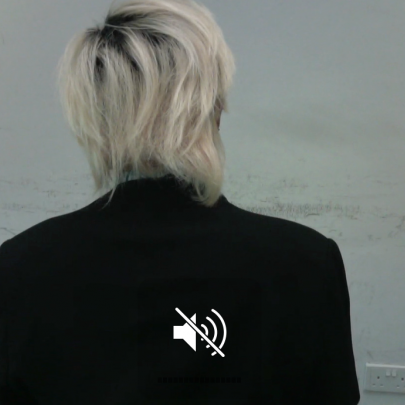
Annie Abrahams, The Big Kiss, (2008)
Machine mediated kissing in a performance = drawing with your tongue = taking pleasure, while constructing an image = a way to be superaware of the other = never totally abandoning yourself = ???????? = not at all like real kissing, it’s better! This might be a female view point.
– Annie Abrahams
Check out 5 minute documentary:
Annie Abrahams creates situations where people reveal things of themselves they normally don’t show, being real and acting out of what is normally accepted, referring to it as an “intimate moment”. The idea is that in such a situation, people invest their thoughts and emotions while conferencing in the third space. In retrospection, it pricks to pick on their performance, in The Kiss, both performers self-consciously gestured a kiss. A kiss and its various cultural connotations deconstructed in the third space. Read more…
From Annie Abrahams’ “not at all like real kissing, it’s better!”, it suggests fear of bodily intimacy such that a mediated situation creates a simulation that human are perhaps more comfortable with from machine’s interface.
On the opportunistic point of view, it is an empowerment of the machine as an extension of our mere body. The sensuality of kissing has transcended beyond the physicality of which.
Fear is an emotion evoked by our instinctual senses that we may react in fight or flight. Women associate oral activities as emotional engagement, that prompts vulnerability. From being “superaware” of the dynamics behind the screen and bearing an overview of oneself with another through super-flat, perhaps then, an inspiration of safety be it physical or emotional propagates thrill and immersive voyeurism.
Virtual sex, no matter how realistic, was really nothing but glorified, computer-assisted masturbation.
― Ernest Cline, Ready Player One
When observed alone in physical space, an observer might decide to feel awkward for the participant, when in fact such engagement is so intimate to those involved. To kiss as a gesture is differentiated in implications. Where in The Big Kiss with the hint of intimacy in machine learning, intimacy pushes beyond physical and emotional, but to cognitive and experiential.
In men’s ideation of sexual fantasies and desires, physical fixation is where the difference lies in as compared to women. Annie Abrahams is might be right after all that it might be of preference to females in virtual act of intimacy.
Touch is the space of the gap, not the connection. (Source)


